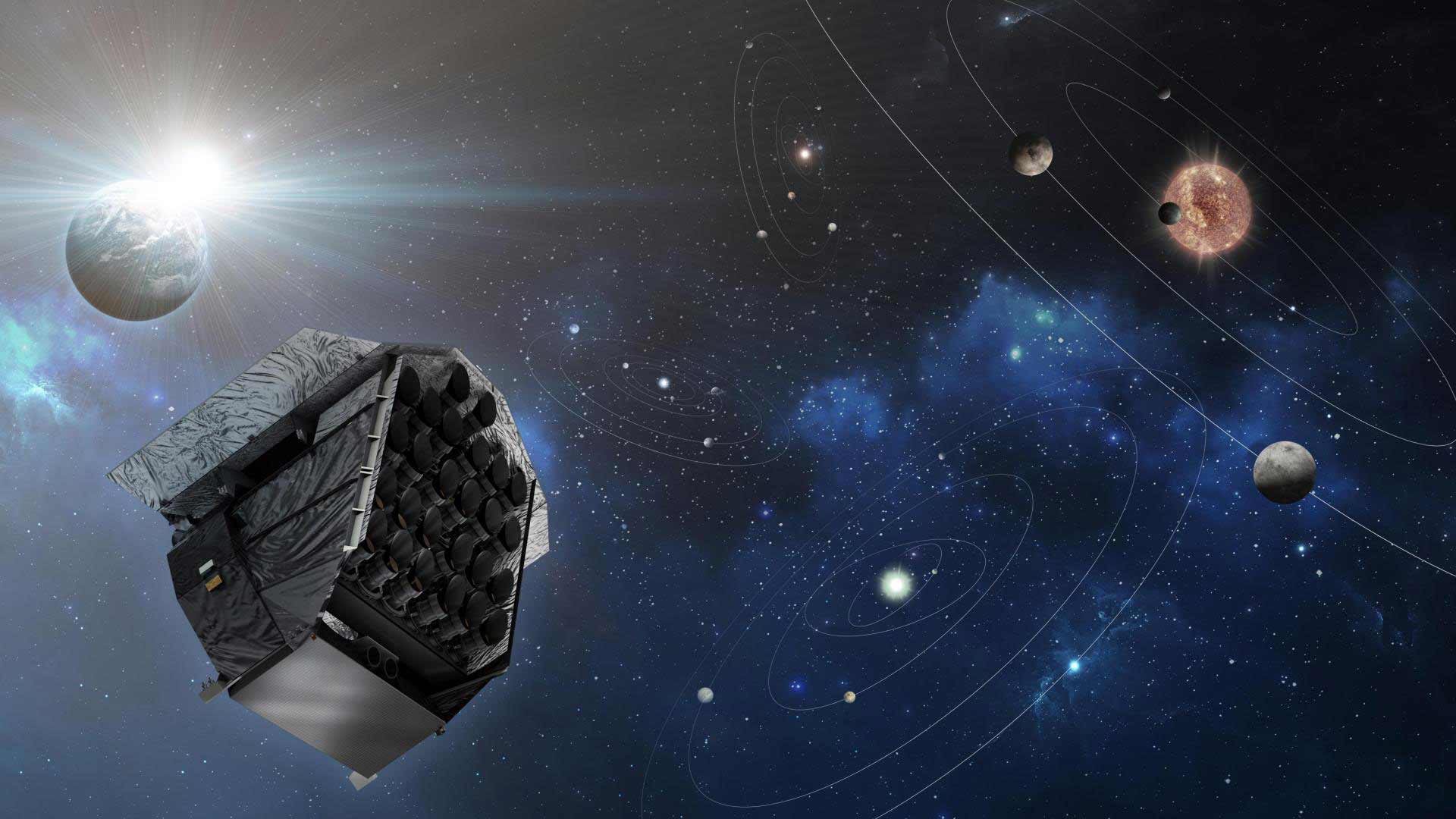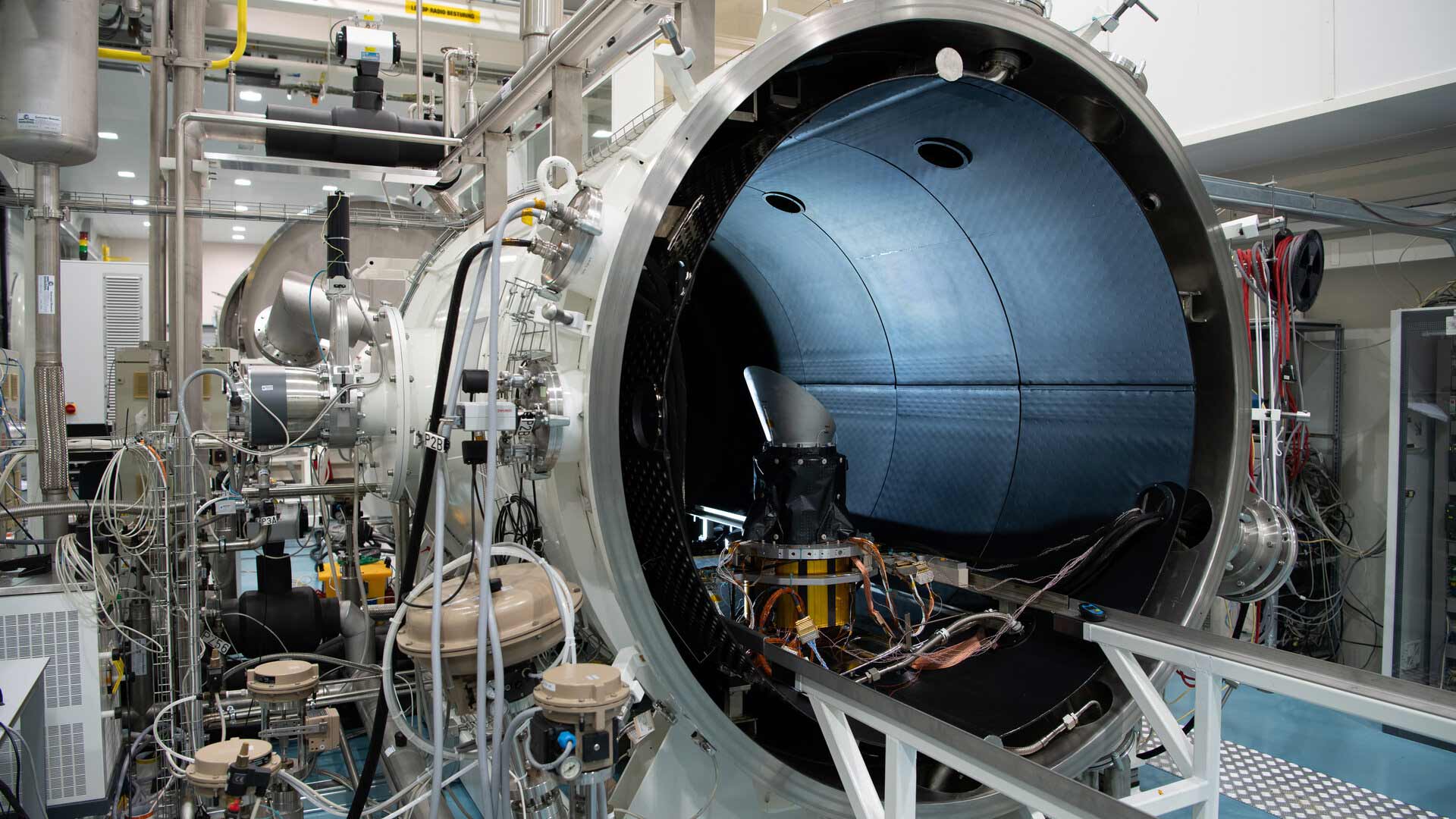In search of a second Earth
Heike Rauer, Director of the Institute of Planetary Research at the German Aerospace Centre in Berlin-Adlershof, on a new space telescope and her work with young people.
Professor Rauer, your talk at the 200th anniversary of the GDNÄ was about the old human question of whether life is possible beyond Earth. A few months have passed since then. Have you come a little closer to finding the answer?
I think so. We are making good progress with the work on the PLATO space telescope, which is scheduled to launch at the end of 2026 and can detect Earth-like planets in the Milky Way. We hope PLATO will provide groundbreaking insights that will help us answer questions like these.
You are part of the PLATO management team. How can we imagine this project?
It is a major scientific project launched in 2014 by the European Space Agency ESA, involving more than a hundred research institutions and the space industry. The acronym PLATO stands for PLAnetary Transits and Oscillations of stars. This mission will help us estimate how many Earth-like planets there actually are. We can then study the atmospheres of discovered planets with large telescopes such as the James Webb Space Telescope and its successor projects. From a distance of 1.5 million kilometres from Earth, PLATO will study star systems in the Milky Way. It records the brief obscurations that occur when planets enter the space between the star they are orbiting and the telescope. In addition, PLATO measures the seismic oscillations of the stars themselves. Once we look at this data collectively, we will not only be able to infer the mass and radius of the planets, but also determine their age – much more accurately than has been possible so far.
How many planets are we talking about?
More than five thousand planets outside our solar system, so-called exoplanets, are known today. The nearest planetary system, Proxima Centauri, is 4.24 light years away. The most distant known exoplanets are 22.000 light years away from us. A journey to these planets would take thousands to millions of years with today’s technology and would therefore be impossible. But with space telescopes like PLATO, we can gain important information about them. We are particularly interested in the exact determination of the mean density of planets. So far, this has only been possible for a few hundred planets – and none of them resembles the Earth-Sun system.
What are you particularly interested in?
Our big goal is to find planets that are habitable, i.e. that have conditions under which life could develop. Since we don’t really know how life develops, we have a lot of factors in mind. We cannot directly observe the biosignatures we are looking for, i.e. signs of life – exoplanets are much too far away from us for that. So we look for indirect traces. Our life on Earth today depends on a high content of oxygen in the atmosphere and on water. Therefore, we are looking for planets with surfaces where there is permanently liquid water and correspondingly moderate temperatures, as well as an atmosphere that is not too dense and not too thin.
Are these the main criteria for Earth-like planets?
Yes. A central star that is similar to the Sun is also one of these criteria. However, we do not want to exclude the possibility of life in other constellations. However, with increasing distance from Earth as the only example known to us, it becomes increasingly difficult to provide circumstantial evidence for the existence of life. That is why we are initially focusing on Earth-like planets. In parallel, however, we are continuing to search for exoplanets with a wide range of properties in order to understand which types of planets exist at all and to investigate their habitability in the next step.

© OHB-System-AG
The PLATO space telescope (here an artist’s impression) is scheduled to launch from the Kourou spaceport at the end of 2026.
Do you already have first impressions?
Among the known five thousand extrasolar planets, there are types of planets that do not occur in our solar system. In general, the diversity of planets is far greater than we have long assumed. This raises new questions about their formation and habitability. Unfortunately, our instruments are not yet sufficient to detect an Earth-like planet around a star like the Sun. But this would be an ideal candidate for the search for life. So we cannot yet directly compare our planetary system with other systems. A first step towards changing this is the PLATO satellite mission. We can then study the atmospheres of the exoplanets found with PLATO with large telescopes such as the James Webb Space Telescope and its successor projects.
More than eight hundred scientists from all over the world are working together in PLATO. How does the collaboration work?
Several consortia, each of which may consist of many partners, are in close exchange with each other. The overall PLATO mission is led by ESA, which also provides the launch vehicle, the ground segment of the satellite and contributions to the payload. The satellite bus, which carries the instrument, is being manufactured on behalf of ESA by an international industrial consortium. The international payload consortium of scientific institutes, also together with the space industry, is building the largest part of the instrument consisting of 26 cameras with associated electronics, on-board computers and power supply units. The payload consortium provides the data centre for the scientific processing of the data and organises the ground-based follow-up observations on telescopes, which will determine the majority of the discovered planets using the so-called radial velocity method. So it is important for the success of such a large-scale project that the various activities and the consortia and organisations involved mesh well.
When do you expect the first results?
PLATO is scheduled to launch in mid-December 2026. This will be followed by a phase in which the functionality will be tested. Immediately afterwards, the observation of the first target field will begin. If everything goes well, we can expect the first data sets at the end of 2027, beginning of 2028. They will make it possible to characterise short-period planets. However, more time is needed to discover planets with long orbital periods.
Will you still be leading the project then?
Missions like the PLATO mission are very long-term projects. PLATO was first proposed in 2009 and is based on ideas from even earlier projects. With projects like this, you have to think across generations. I myself will retire around the start of the mission and am looking forward to taking the project to the first data collection. Already, one of my tasks, together with the colleagues who launched PLATO, is to introduce the next generation of young scientists to this and subsequent missions.

© ESA
One of 26 cameras of the PLATO mission.
How did you get into this field of research?
I used to study comets, which can tell us a lot about the formation of our solar system. Then, when the first extrasolar planets were discovered in the mid-1990s, I switched to this line of research. Now, for the first time, we can compare our solar system directly with other systems and learn a lot about the processes that have influenced our system. And of course, I also find it fascinating to search for life beyond Earth.
At the Leipzig anniversary conference of the GDNÄ, you captivated the audience with your lecture on extrasolar planets. What do such appearances mean to you?
When I give public lectures, I always notice how interested the audience is in our work. They want to know how planets are formed, how life is formed and whether there are planets with life around other stars. Today, for the first time, we can find answers to these questions using scientific methods – and I am extremely happy to report on this work to the interested public.
In Leipzig, you got to know the GDNÄ’s student programme. Your research centre, the DLR, runs student laboratories, in which you are also involved. What is it about working with young people?
I think it’s important to show young people what research is really about, and I want to encourage them to think further. In my experience, astronomy is particularly suitable for this, because it deals with the big questions of where from and where to, which appeals to young people in particular. We can often motivate them to tackle even difficult courses in the natural sciences and engineering and to persevere until they graduate.

© DLR
Prof. Dr Heike Rauer heads the DLR Institute of Planetary Research and coordinates the PLATO exoplanet mission.
About the person
Since 2017, Professor Heike Rauer has headed the Berlin Institute of Planetary Research of the German Aerospace Center (DLR) with more than one hundred employees. The physicist is also a professor at Freie Universität Berlin in the Department of Earth Sciences, specialising in Planetary Geophysics. Rauer has been conducting research at the DLR Institute of Planetary Research since 1997, where she headed the “Extrasolar Planets and Atmospheres” department for many years. Before that, from 1995 to 1997, she was a research fellow of the European Space Agency ESA at the Observatoire de Paris-Meudon. In 2004, Rauer had habilitated at the Technical University of Berlin and taught there as a professor of planetary physics at the Centre for Astronomy and Astrophysics. In 1991, she received her doctorate from the University of Göttingen with a research thesis on plasma tails of comets. Heike Rauer received her diploma in physics in 1986 from Leibniz University in Hannover. Since 2013, she has been leading the instrument consortium for the ESA space telescope PLATO, which will search for planets in the Milky Way from 2026 onwards. She is also a member of the science team of the “Next Generation Transit Survey” at the Paranal Observatory of the European Southern Observatory ESO in Chile and coordinator of the DFG priority programme “Exploring the Diversity of Extrasolar Planets”.
Weitere Informationen:
